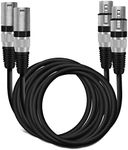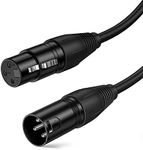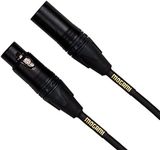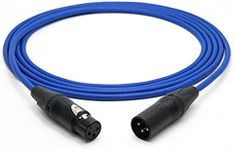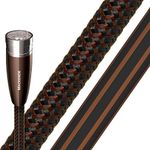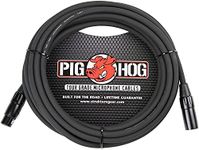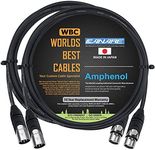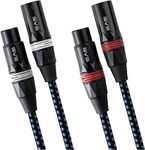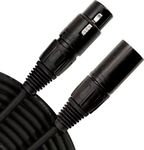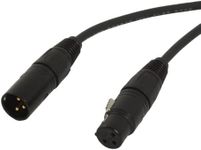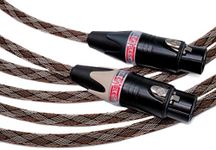Buying Guide for the Best Audiophile Xlr Cables
When choosing audiophile XLR cables, it's important to understand that while all XLR cables serve the same basic function—transmitting balanced audio signals—there are differences in build quality, materials, and design that can affect durability, noise rejection, and overall performance. The right cable for you depends on your audio setup, environment, and personal preferences. Focus on the specifications that matter most for your use case, and remember that the most expensive option isn't always the best fit for your needs.Cable ConstructionCable construction refers to how the cable is built, including the materials used for the conductors, insulation, shielding, and connectors. This is important because high-quality construction can improve durability, flexibility, and signal integrity. Cables with solid metal connectors, robust strain relief, and flexible yet tough outer jackets are generally more reliable. If you plan to move your cables often or use them in a professional setting, look for cables with reinforced construction. For home setups where cables remain stationary, flexibility may be less critical.
ShieldingShielding is the layer within the cable that protects the audio signal from electromagnetic interference (EMI) and radio frequency interference (RFI). Good shielding is crucial for maintaining a clean, noise-free signal, especially in environments with lots of electronic devices. Shielding can be braided, foil, or a combination of both. Braided shielding offers better durability and flexibility, while foil provides more complete coverage. If you’re in a studio or near lots of electronics, prioritize cables with strong shielding. For quieter, interference-free spaces, basic shielding may suffice.
Conductor MaterialThe conductor is the part of the cable that actually carries the audio signal, and it's usually made of copper or sometimes silver. Oxygen-free copper (OFC) is common and offers good conductivity and resistance to corrosion. Silver-plated copper can provide slightly better conductivity but is often more expensive. For most users, high-quality copper conductors are sufficient. If you’re seeking the absolute best performance and have a very high-end system, you might consider silver-plated options.
Connector QualityConnector quality refers to the design and materials of the XLR plugs at each end of the cable. Well-made connectors ensure a secure, reliable connection and resist wear over time. Gold-plated contacts are popular because they resist corrosion and maintain good conductivity. If you frequently plug and unplug your cables, prioritize robust connectors with good strain relief. For permanent installations, standard connectors may be adequate as long as they fit securely.
Cable LengthCable length is simply how long the cable is from end to end. Longer cables can introduce more signal loss and are more susceptible to interference, while shorter cables generally preserve signal quality better. Choose the shortest length that comfortably reaches between your components without stretching or straining the cable. For home audio setups, 1 to 3 meters is usually sufficient. For studio or stage use, you may need longer cables, but be mindful of potential signal degradation.
Flexibility and DurabilityFlexibility and durability describe how easily the cable bends and how well it withstands repeated use or movement. This is important if you need to route cables around tight corners or if you’ll be moving them often. Cables with a soft, pliable jacket and reinforced strain relief are easier to handle and less likely to break. If your cables will stay in one place, this may be less important, but for portable or professional use, prioritize flexibility and ruggedness.
